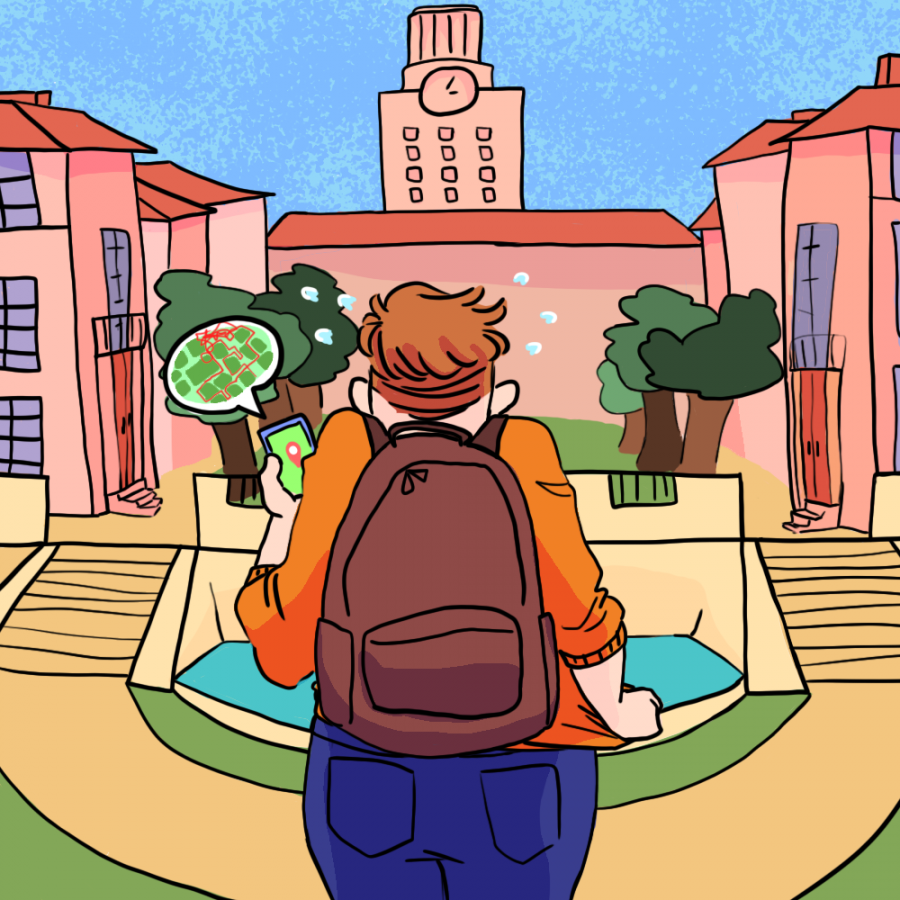Students share thoughts on in person transition, how it will bring community
June 17, 2021
Editor’s Note: This article first appeared as part of the June 14 flipbook.
Walking down Speedway amid clumps of incoming freshmen in the summer heat, Katilyn Carr’s 2019 orientation was full of meeting new people and exploring campus. As an orientation adviser this summer, though, orientation starts with a click of a button, joining Zoom meetings from her West Campus apartment.
Since the COVID-19 pandemic began in March 2020, classes, activities and social gatherings have been held virtually. Though each class endured a different pandemic experience, transitioning to in-person classes in the fall is a commonality each student will experience together.
“I’ve been virtual longer than I’ve been in person. I feel like (the fall 2019 semester) was fun, but now (each semester) feels a little bit more like a blur, because (everything has) changed so quickly,” said speech, language and hearing sciences junior Carr. “I’m actually really nervous to go back because all I know now is my routine for online school.”
Carr said this year’s orientation has drastically focused on mental health to accommodate the changing environment and policies. Also, she said this year’s Longhorn Welcome Week will not only focus on incoming students, but serve as a welcome back for everyone, as students readjust to in-person classes and post-pandemic norms.
“We’ve had people from University Health Services and the mental health center come talk to (orientation groups). That genuinely is a good resource for going back because having any worries is normal,” Carr said. “It’s really helpful knowing (that) we actually are all in the same boat. There’s not that much of a difference between anybody, really, except for probably our age.”
As an incoming biology freshman undergoing a virtual orientation, Daniella Espinoza realizes she must not only adjust to college life, but a post-pandemic life. She is ready to tackle the challenges that await and return to in-person schooling.
“Because of quarantine, I know a lot of my friends, and even for me at one point, started to develop social anxiety,” Espinoza said. “I definitely think (socializing) is going to be an adjustment we have to go through, but I think we’ll get back to it, and it’ll be normal again.”
Attending virtual orientation last summer, electrical engineering sophomore Paul Han said he feels his experience did not prepare him for in-person classes or meeting new people.
“With traditional orientation, you would walk around campus exploring and visiting all these different buildings, but we weren’t given that luxury, obviously,” said Han. “We looked at a couple of buildings on Google Maps, but that really doesn’t replicate actually walking from place to place. The Zoom meeting was basically just awkward silences all day, and no one really wanted to talk.”
Because Han’s first year at UT was all virtual, he said he feels like he’s in the class of “2024.5,” referring to it as a strange in between state.
Han, Carr and Espinoza recognize many other students may be worried about returning in person in the fall and said that will ultimately unite the UT community.
“Going back is a huge change for a lot of people,” Carr said. “Our support will be each other. Something I have noticed from interacting with students in orientation is that a lot of students found comfort in knowing that we’re going to all do this together.”












